Drones Take Flight in Middle School Program
Reading helps unlock the mysteries of the present and the history of the past. But reading alone doesn’t always light up the imaginations of students. We can spark their curiosity, however, when we give kids the opportunity to become creators – bringing to life something they’ve read about in fiction or informational texts but haven’t yet experienced themselves.
In my sixth grade classroom, students were studying the evolution of aeronautics, with one eye on the history and impact of flight and the other on 21st century events and stories that affect their lives today and perhaps their careers tomorrow.
In my classroom, instead of focusing primarily on rote memorization of lists and facts, my students are challenged to grasp concepts and procedures. In today’s world, simply knowing that Orville and Wilbur Wright were American pioneers of aeronautics is not enough. In our studies, students tackled the harsh and complex realities of 9/11 and airborne terrorist attacks from around the world through literature circle YA novels like Towers Falling and Nine, Ten.
To further delve into current aeronautical trends, we explored the value and use of drones in relationship to war and safety through a variety of informational texts – “Invasion of Drones,” “Drones Take Off,” “Should the United States Continue Its Use of Drone Strikes Abroad?,” and a CNN Student News video (5/9/17 – 5:38-8:39).
The details in these informational texts allowed students to conclude that flight-related safety and security is of utmost importance to them and was beautifully articulated in their expository writing, especially since drone warfare could have such a lasting effect on the lives of innocent people as well as on national security.
Seizing the moment
Upon completion of our unit, my students remained intrigued about flying, and, as it happened, our local television station was promoting its newly trained staff of “news drone” operators. Students were curious about these operators who were actually being paid to fly “toys.” This 21st century occupation fell outside the traditional Maryland College and Career Readiness (CCR) standards, and I wanted my students prepared to consider this new career option.
The learning opportunity all these elements presented led to the creation of a cross-curricular project with our mathematics teacher. Students were engaging in basic geometry and measurement CCR standards, but now the challenge goal was to take their background knowledge of drones, plus previously learned mathematical skills, and use their know-how to create a product that displayed a deeper understanding of both mathematics and unmanned flight.
Teacher research (and some fun)
At the time, I had never flown a drone before. However, I knew it was trendy, that students were talking about it, and that drones might hook even the most reluctant learners. So I began to research, crowdsource on Twitter, and reach out to other educational drone innovators to gain insight on implementing a program.
Then I bought my own drone. I spent my first weekend flying around my home office as my toddler chased the mini-drone down and my dog howled. In time, I built some capacity and learned through trial and error. I left scuff marks on the wall, but I figured out some of the necessities involved in flying a drone.
The Pitch
Shortly thereafter I decided to sit down with our after-school administrator and plead my case on the value of using drones in instruction. Armed with cost information and a number of online examples of projects related to math and STEM standards, I flew my drone into her office. It was an instant sensation, and #EduDrone was born at Pocomoke Middle School.
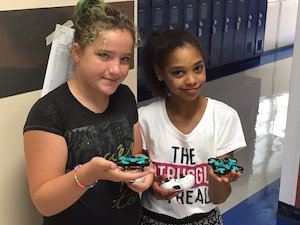
Purchasing Drones
When it was time to purchase the drones, I reached out to Adam Hinnenkamp, a technology teacher from Wayzata, Minnesota who is experienced with using drones in classroom settings. He shared some key ideas that make an EduDrone program successful:
- Durability in drones is key; students unintentionally break things
- High costs can shut down even the best programs
Hinnekamp’s advice led us to purchase our first fleet of eight Furbee Mini Quadcopter drones ($20-25 each). Here’s what they look like.
Six Week Breakdown of After-School Drone Sessions
- What Are Drones? Explored the physical components of drones and their aeronautics. Focused on how drones are able to hover in one place.
- Experiential Flying Courses. Practiced learning to fly the drones – and it was fun! Having fun is a key component to enticing students to learn more.
- Explore Drone Coursing. We watched videos of drone challenge courses from Hinnekamp’s students and watched some video of the Drone Racing League.
- Design Courses. Groups designed their own courses via graph paper and PVC piping.
- Design Courses and Practice Flying. Continued designing and building courses and sharpening our flying skills.
- Flying Student-Designed Courses. Created a challenge to fly through each student’s course, keeping time. (This tweet has a video of one of our flights.)
Results and Early #EduDrone Lessons Learned
The unchartered territory of #EduDrones was a huge success and a great curiosity to everyone who passed by to watch students fly their drones. I’ll admit, it’s always nerve-racking whenever I begin something new because of the high expectations I set. However, I also know that each new project is a great opportunity to learn.
I made plenty of notes along the way so I can tweak the next student learning experience. Here are a few of my takeaways:
- Course Levels: More students had skills using drones than I expected, whether it was playing with one at a store or having done a simulation on a video game system. Many students caught on very quickly. To improve, we are going to create beginning, intermediate, and expert classes to better serve our students.
Coding: There are drone companies – Parrot Education is one – that are specializing in coding aspects that can be easily integrated into a school project like designing obstacle courses. It is another investment but also another engaging way to introduce coding to students.
- Teamwork: The best decision I made was adding our math teacher into the mix of drones because she instantly knew the math standards that aligned to our obstacle course drawings. She even interjected the idea of making our course using our school’s 3D printer prior to building it with PVC piping.
- #EduDrone Community: Our phrase EduDrone quickly became a hashtag picked up by Twitter users to connect an unofficial community of teachers who are implementing drones in school.
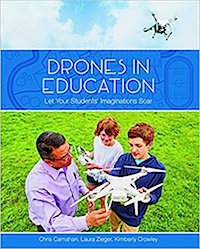
UPDATE: For our program this year, we’ve purchased some additional drones. We’ll have, from front right (counterclockwise), the FuriBee mini-quadcopter drones ($20-25); a Raven Aerial Photography Drone ($70); and a DJI Phantom 3 Drone ($400-$450). Each of the three drone types will be utilized based on student experience levels and proficiency during the program.
Brian Cook, Ed.D., is an English Language Arts teacher at Pocomoke Middle School in Worcester County Public Schools in Maryland. Connect with Cook on Twitter @drbriancook.


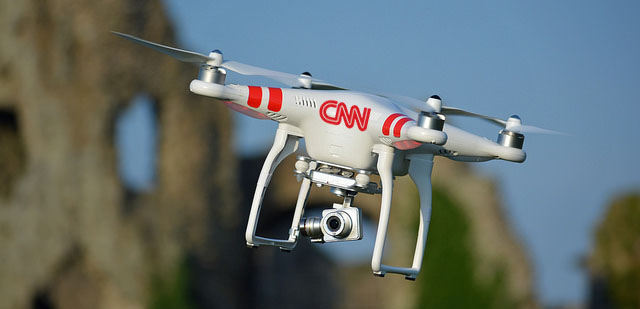
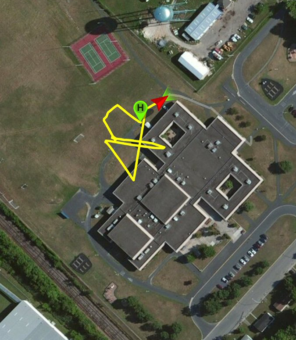
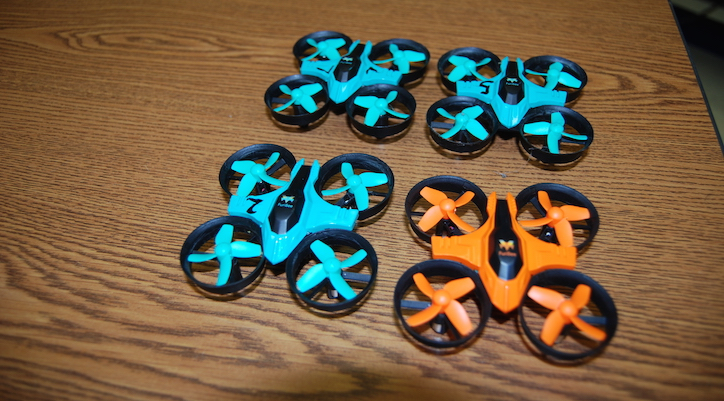
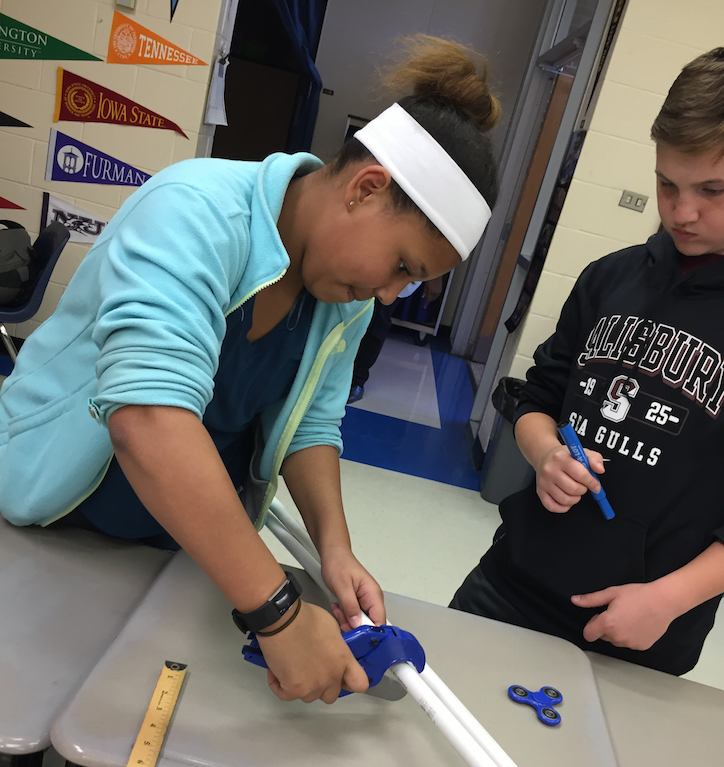
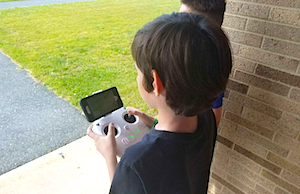
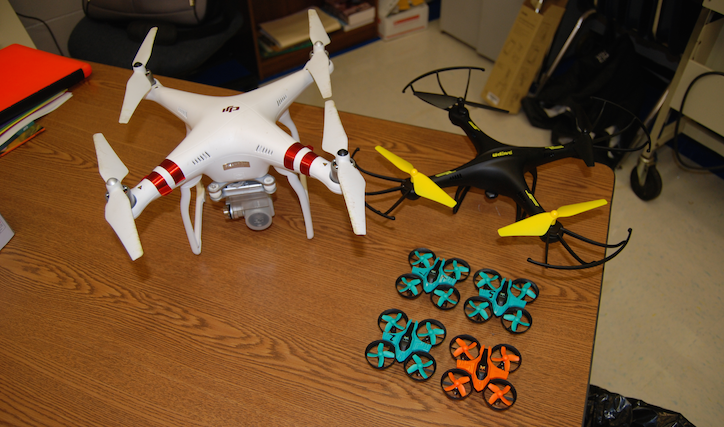


































Thank you so much for this article, from a new STEM teacher. We bought some drones from Costco from the PTO. I have some pretty inexpensive ones, but hope to buy more. I had many of the same ideas to teach drones, but it is nice to find an article that backs up your though process.
Any resources you can share would be helpful. I am going to do some teaching in my STEM classroom before these kids get their “drone license.” But I think this will be a hit with kids. They seemed super excited. Having fun is a key component to enticing students to learn more. We watched videos of drone challenge courses from Hinnekamp’s students and watched some video of the Drone Racing League.
I sure wish we would’ve had a drone program when I was in school! That’s one club I definitely would have joined.
One of the most thorough projects (in terms of background learning and preparation) that I’ve seen, and well-integrated with other subjects. True iSTEM!